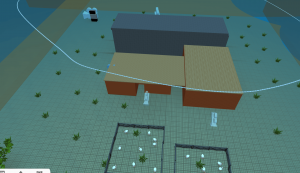Earth Day Blog
On Saturday, a windy day to kick start with earth day, and presumably, that is the earliest morning of my life. We initiated our first task-the dome, due to the unexpected weather from the night before the dome was left and deconstructed in the tent to ensure the performance on earth day. We began with the skeleton and move along to the reinforcement by adding the wood sticks. And finally warped with fabric shield, the whole process was relatively challenging under the high wind conditions, everyone has to pay attention to the details in case collapse of the dome. Meanwhile, I and my teammates milo start to set up our own group unit, our original intent is to use VR thru Samsung Gear, whereas, I did not test prior to the earth day and gear has an issue which its low ram that cannot load our over the complexed file. Hence, we have no choice but switch to plan B by using a display. And by the time of noon, people start to come in, we have attracted great amount of crowds. overall, it was thrilling experience, from studio to stage.

